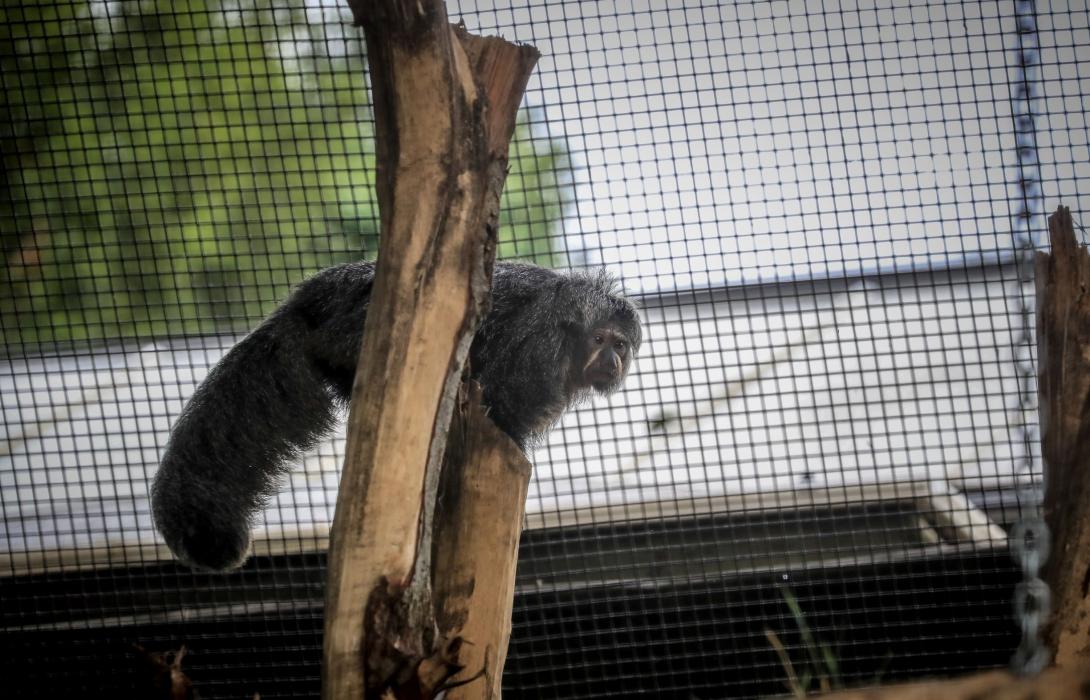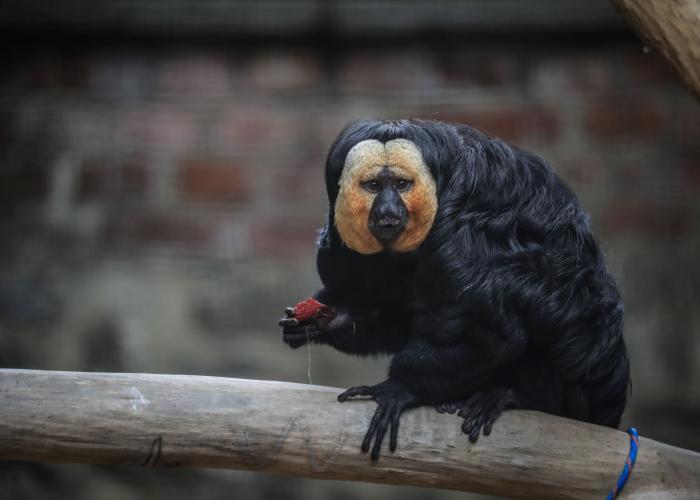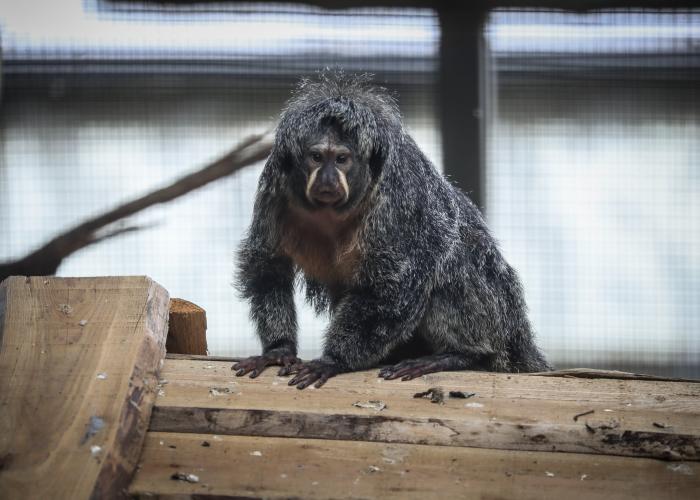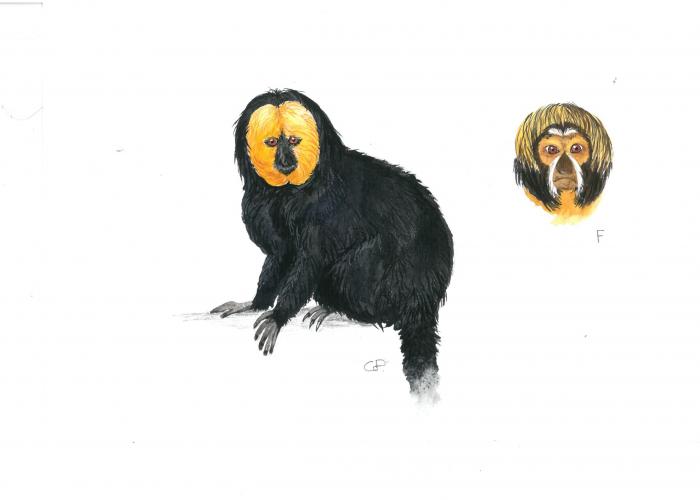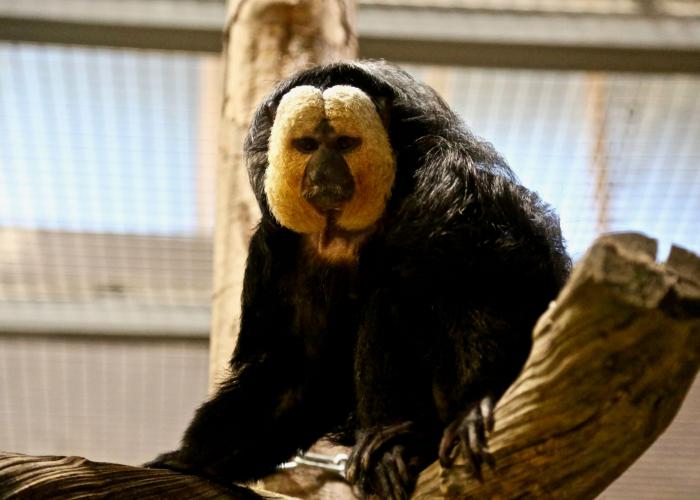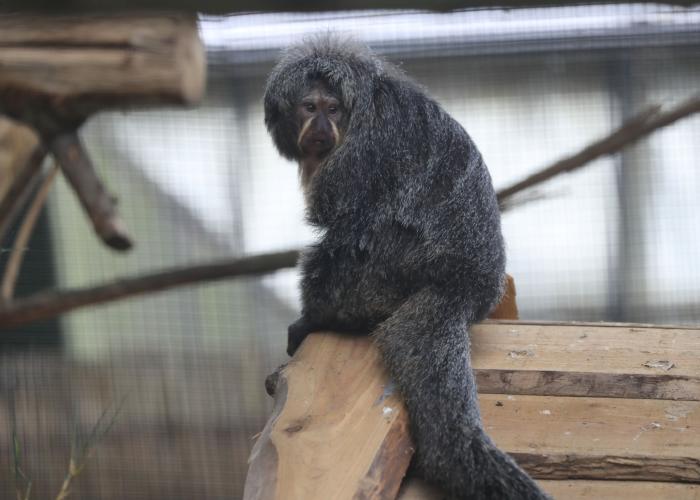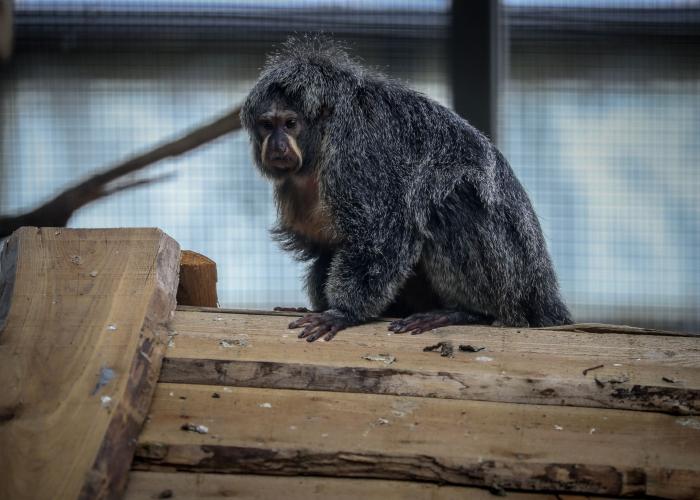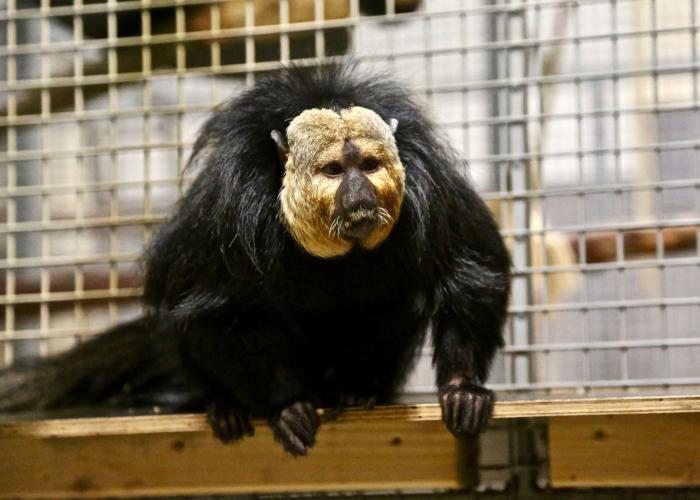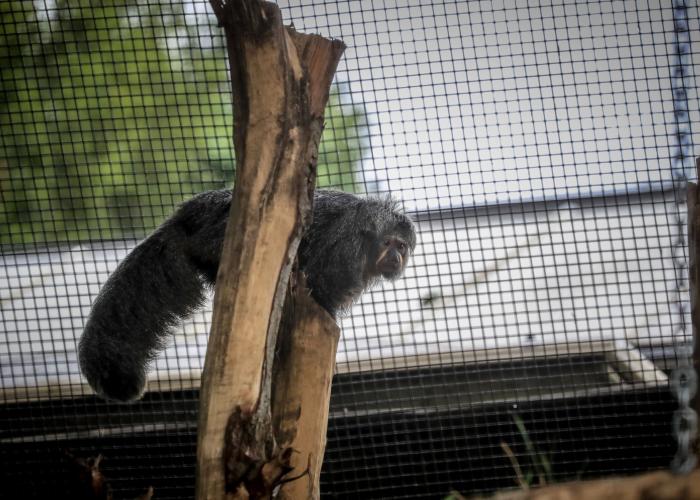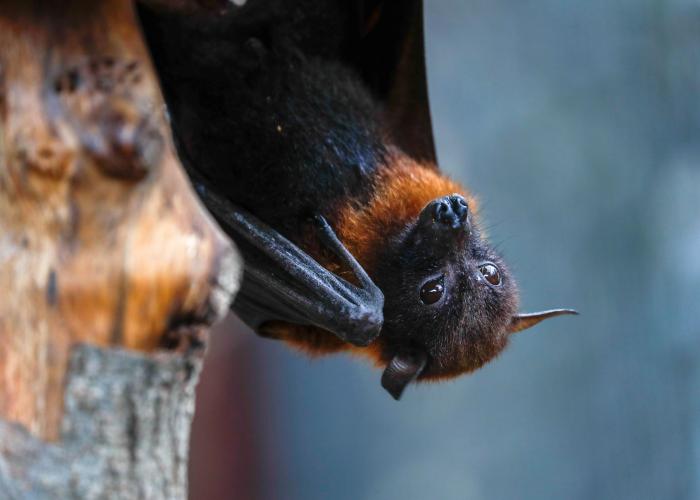White-faced Saki
Two white lines around the nose
The White-faced Saki Monkey is named after the appearance of the adult male whose forehead, face and throat are pinkish white, and the rest of their coat black. The females have a grey-brown coat with two white lines around the nose and mouth.
Sakis, which are very agile and able to jump from tree to tree (they are sometimes called flying monkeys) have powerful hind legs and a long bushy tail used to balance, and live in the lower canopy floors. They feed on fruits, seeds, nuts and also insects.
The female gives birth to one baby per year which she takes very good care of, protecting it and teaching it the rules of autonomy.
White-faced Sakis** live for about 15 years** and longer in captivity, as is often the case.
Their predators are large constrictor snakes, cats and the Harpy Eagle, a formidable raptor.
Four white-faced sakis
Two males and two females live in the Jardin des Mondes The males are called Roger and Thiago. The females are called Mérida and Clémentine.
A less threatened species
- Name: White-faced saki
- Latin name: Pithecia pithecia
- Origin: The northern countries of South America (Venezuela, the Guyanas and Brazil)
- IUCN status: Least concerned
- Cites: Appendix II
